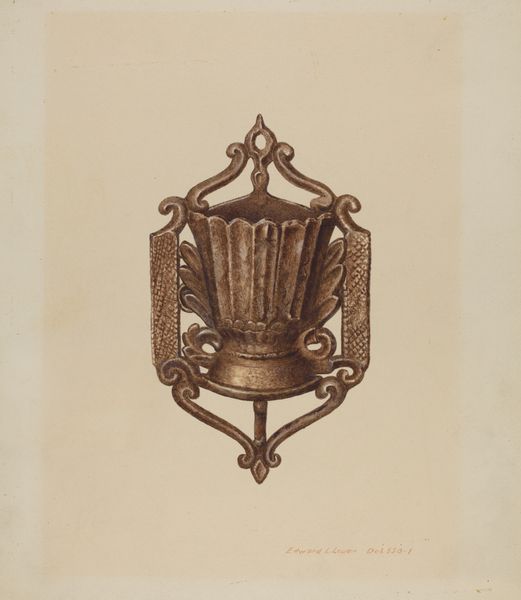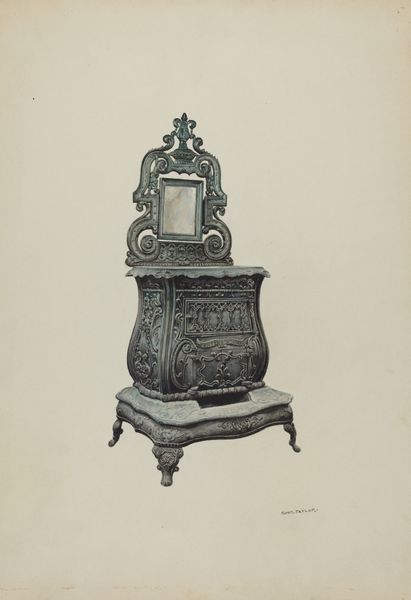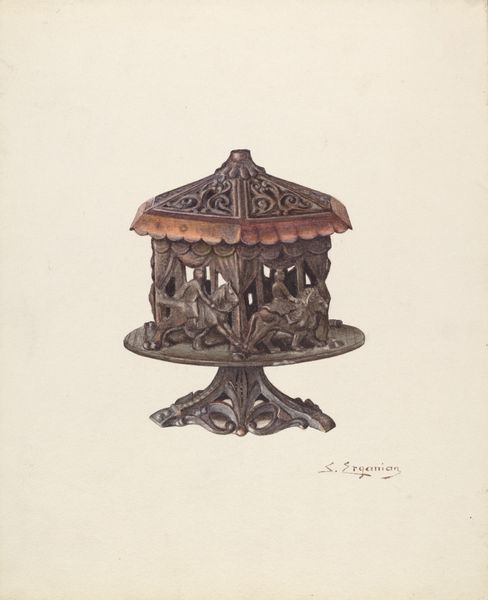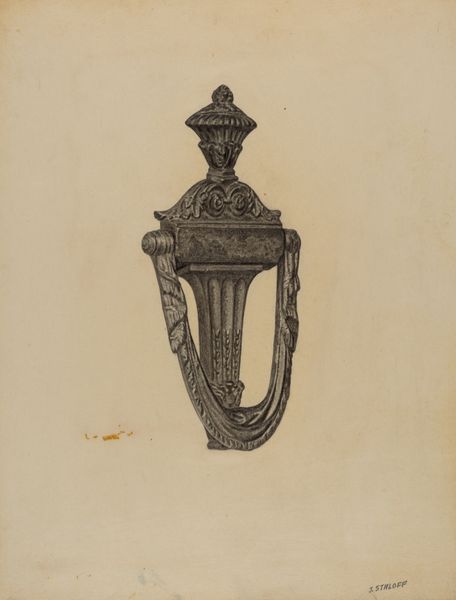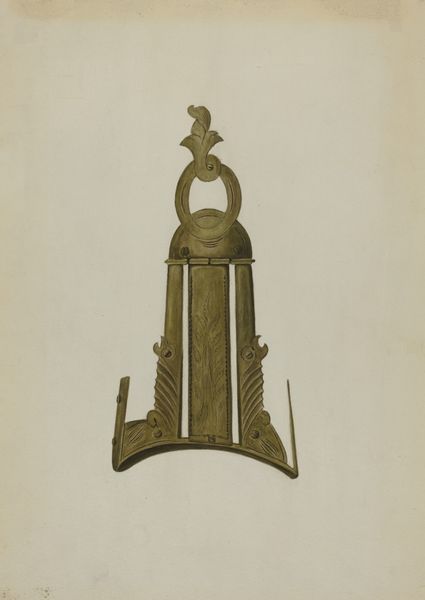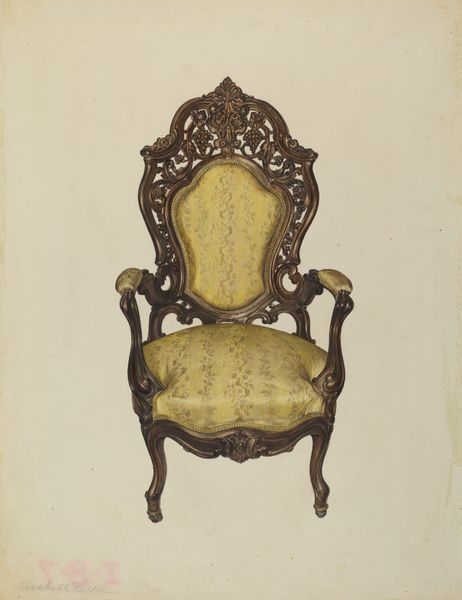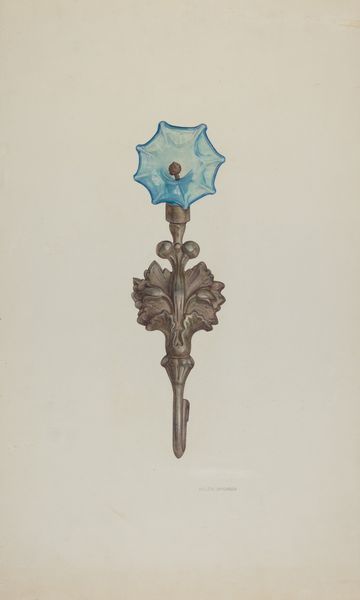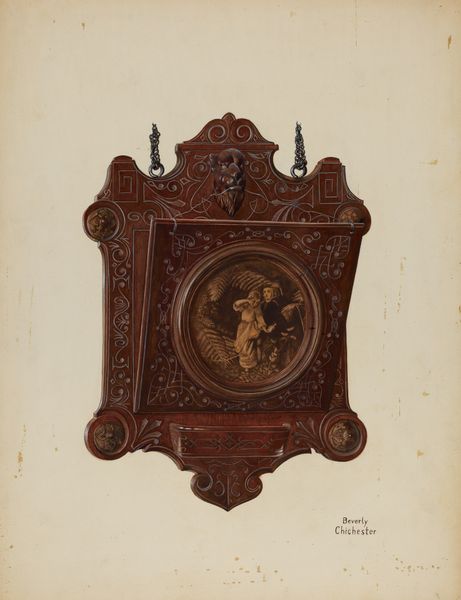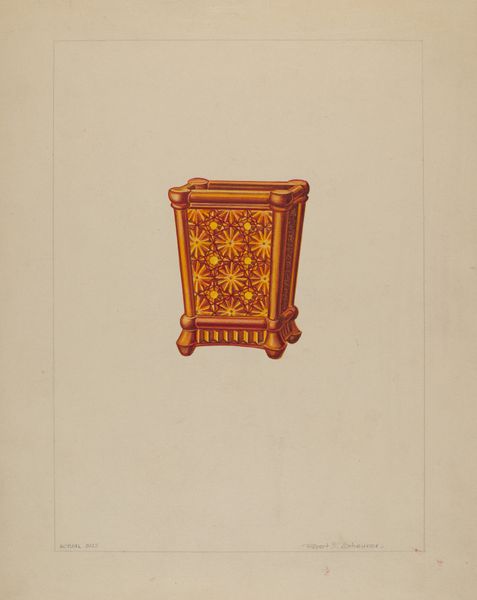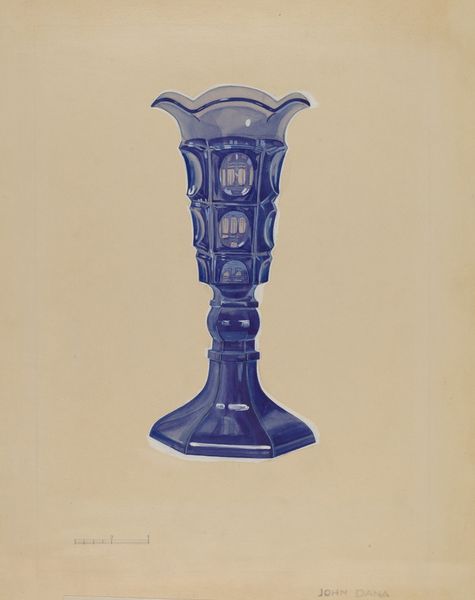
Dimensions: overall: 45.7 x 35.8 cm (18 x 14 1/8 in.) Original IAD Object: 36" high; 16" wide; foot rest: 21" long
Copyright: National Gallery of Art: CC0 1.0
Curator: This drawing, titled "Bootjack," dates back to around 1938, and the artist is Hardin Walsh. Editor: It has a definite... quaintness. The ornate frame, the small figure… It feels almost theatrical, like a miniature stage set. I imagine this in an exhibition about obsolete domestic objects. Curator: It’s fascinating how the materiality contributes to that sense. We have the wooden bootjack, obviously intended for removing boots, but then within it, there’s what appears to be a carefully rendered painted portrait. How do those two uses coexist? Editor: That’s precisely it! A bootjack is a functional object, usually quite simple, and unceremonious. The elaborate design elevates it. It speaks volumes about social rituals and class aspirations from a certain historical context, doesn't it? What kind of social performativity might such an item facilitate or invite? Curator: Indeed. Walsh’s choice to portray this bootjack with such detail… It’s like documenting a bygone era’s specific manufacturing processes and values surrounding leisure and domestic service. Think about who owned it, who made it, what their relationship was? Were bootjacks made by industrial workers, craftspeople, or a mixture of both? Editor: And beyond labor, it speaks about display. Someone, somewhere, felt that boot removal could, or *should* be elegant. That notion, for better or worse, is intrinsically tied to power, access, and a curated lifestyle that certain individuals can afford. The object itself becomes a statement of cultural capital. Curator: Absolutely. And looking at the marks on the paper, the medium itself points to particular skills, maybe even the artist’s engagement with commercial art—illustrations, maybe for catalogs of luxury goods. How the labor of drawing creates not only an image, but potentially drives a kind of desire. Editor: So, much more than simply an image of an old household tool; it prompts questions about who made it, what status did its ownership infer and ultimately, what stories these things could tell about power structures during this era? Curator: Exactly. "Bootjack" offers a nuanced look at material culture during a pivotal period. Editor: A potent reminder that even everyday objects carry encoded social meaning.
Comments
No comments
Be the first to comment and join the conversation on the ultimate creative platform.

